Antinol® Latest Studies
Sorted by recent
 Filter Studies by Smart Tags
Filter Studies by Smart Tags
Bone & JointCardiovascularCase Study & ProceedingCatDogEAB 277™EfficacyExotic PetImmunologyNeuro & BehaviorOphthalmologyOralRabbitRenalRespiratoryRodentSafetySkinUTI
Smart Search
The Effectiveness of Marine Based Fatty Acid Compound (PCSO-524) and Firocoxib in the Treatment of Canine Osteoarthritis

This randomized double blinded study included 79 mixed breed dogs that had hip and/or stifle OA with X-ray confirmation. Outcome measures were changes in Kinetic force plate gait analysis-Peak Vertical Force (PVF), the Orthopedic Assessment Score (OAS), Canine Brief Pain Inventory score (CBPI), and serum prostaglandin E2 concentration (PGE2).
The results of the study suggest that within each group of a combination (PCSO-524 and Firocoxib), PCSO-524, Firocoxib showed the significant improvement of weight bearing ability but not in the comparison between.
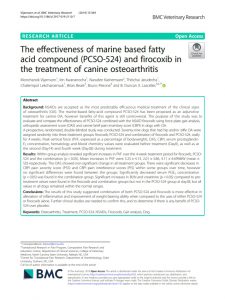

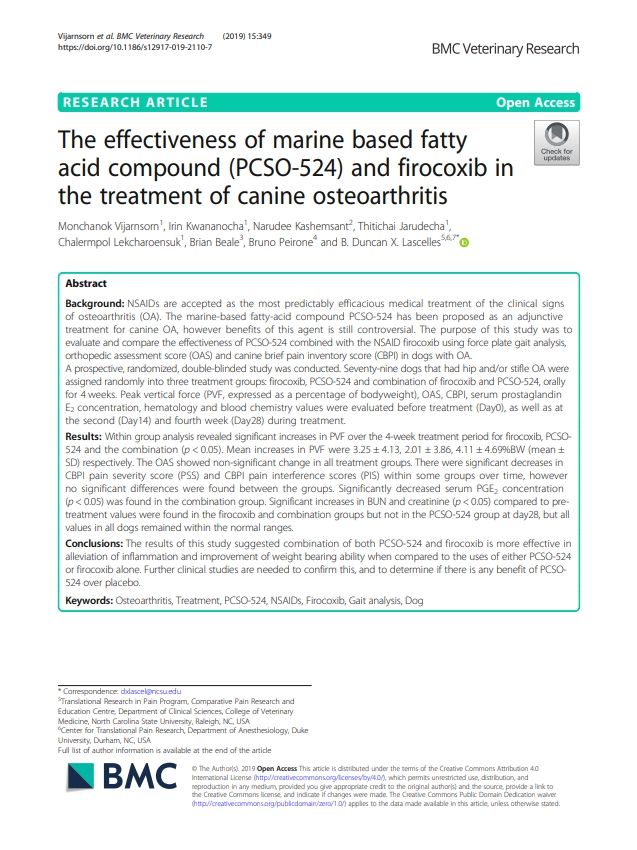
The Effectiveness of Marine Based Fatty Acid Compound (PCSO-524) Alone and Combined with Firocoxib in the Treatment of Canine Osteoarthritis

(VOS conference, March 2018)
This randomized study involved 31 mixed breed dogs with x ray confirmed OA of stifle joint. They were split into 2 groups for four weeks of treatment.
The results showed a non-significant effect of the treatment on the adjusted Peak Vertical Force (PVF) value (p=0.447) among the 2 treatment groups.
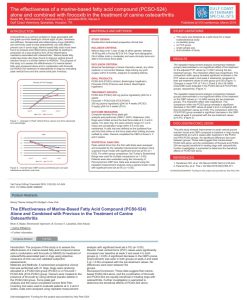
![]()
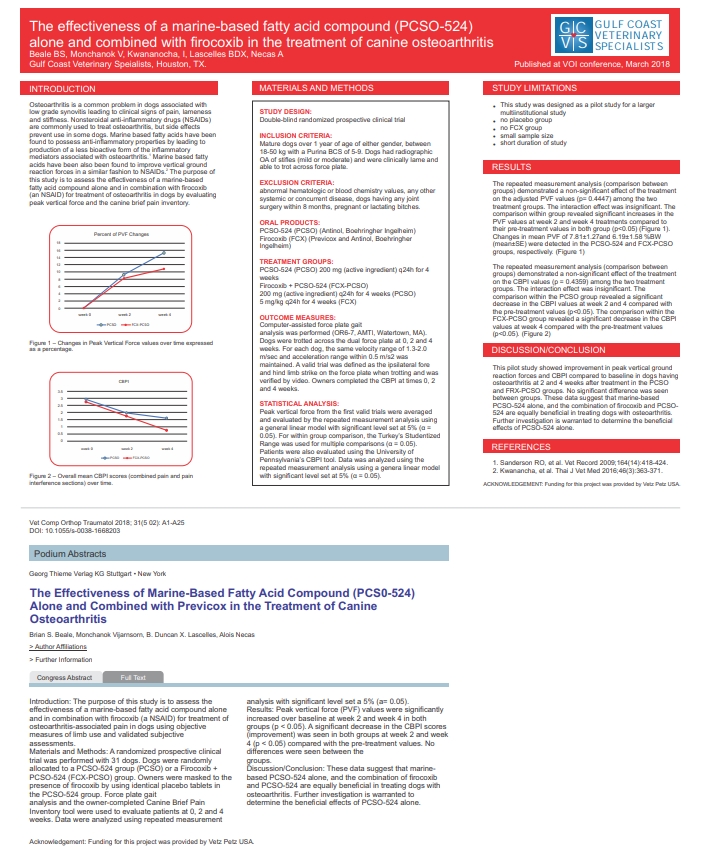

The Effectiveness of Marine Based Fatty Acid Compound (PCSO-524) and Firocoxib in the Treatment of Canine Osteoarthritis.

This randomized double blinded study included 79 mixed breed dogs that had hip and/or stifle OA with X-ray confirmation. Outcome measures were changes in Kinetic force plate gait analysis-Peak Vertical Force (PVF), the Orthopedic Assessment Score (OAS), Canine Brief Pain Inventory score (CBPI), and serum prostaglandin E2 concentration (PGE2).
The results of the study suggest that within each group of a combination (PCSO-524 and Firocoxib), PCSO-524, Firocoxib showed the significant improvement of weight bearing ability but not in the comparison between.
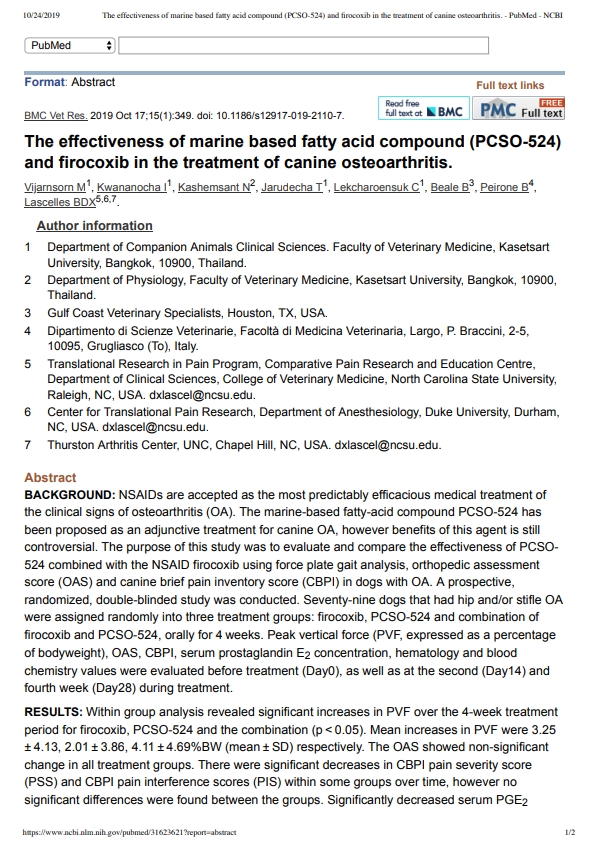
Antinol® Case Study Contest 2020

The 8 Case Studies from Antinol® Case Study Contest of 2020.
________
1st Winning Awards
1) Use of PCSO-524® and Cyclosporin for Treatment of Immune-Mediated Polyarthritis in Dogs
2) Use of PCSO-524® for Supplementary Treatment of Protein Losing Nephropathy in Animals
________
2nd Winning Awards
3) Use of PCSO-524®(Antinol®) in a Pomeranian Dog with Degenerative Mitral Valve Disease (DMVD) and Cardiac Tumor of the Left Atrium
________
3rd Winning Awards
4) Use of PCSO-524 (Antinol®) for Treatment of Chronic Pododermatitis in FIghting Cocks
5) Use of PCSO-524® with Physical Rehabilitation to Regain Mobility in Dogs after Femoral Head and Neck Excision
6) Use of PSCO-524® (Antinol®) and Casting for Treatment of Tetraparesis and Neck Pain Due to Atlantoaxial Instability and Subluxation of the 1st-2nd Cervical Vertebrae
7) Effect of One Year Treatment with PCSO-524® on Feline Dermatophytic Pseudomycetoma

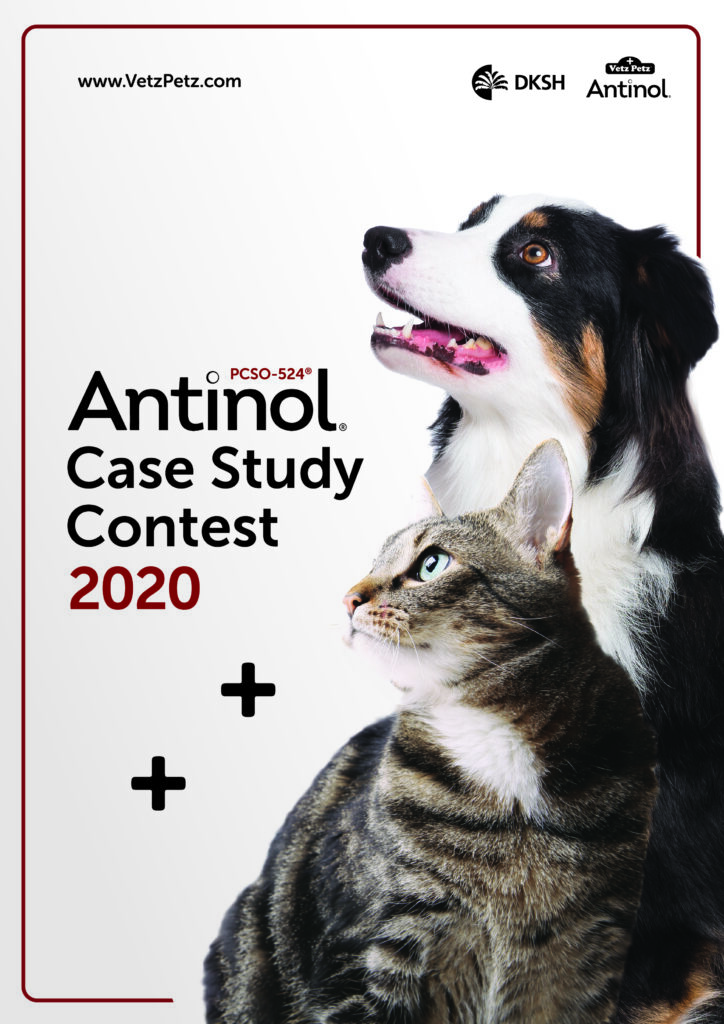

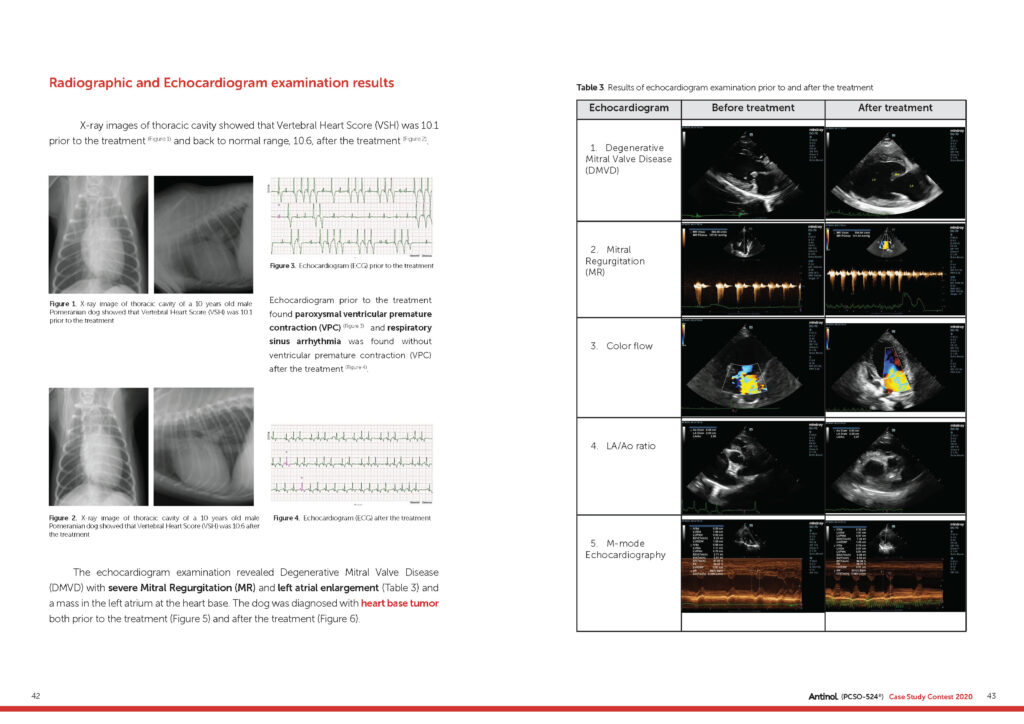
Use of PSCO-524® (Antinol®) and Casting for Treatment of Tetraparesis and Neck Pain Due to Atlantoaxial Instability and Subluxation of the 1st-2nd Cervical Vertebrae

A 7 months old male Pomeranian dog was admitted to Thong Lor animal hospital for signs of intermittent leg paresis and hyperesthesia during the past 2 weeks.
Physical examination found grade II tetraparesis, neck hyperflexion, spasm of cervical muscle, and cervical hyperesthesia.
X-ray examination showed atlantoaxial instability and dorsal subluxation of the first and second cervical vertebrae. The disease is congenital and commonly found in toy breed dogs (Itoh H. et al, ).
A cast was used to stabilize the joints for 12 weeks in conjunction with medicinal treatment including pain killer medicine, gabapentin, and 1 capsule of PSCO-524® (Antinol®) sid.
After one week of the treatment, the dog showed no sign of pain when touched but the signs of hind limb paresis still remained. The treatment was continued until the 10th week that gabapentin was terminated and no recurrence of pain was detected since then.
After 12 weeks of the treatment, the cast was removed and PSCO-524® (Antinol®) 1 capsule sid was continued and the dog did not show any progressive development of clinical signs.
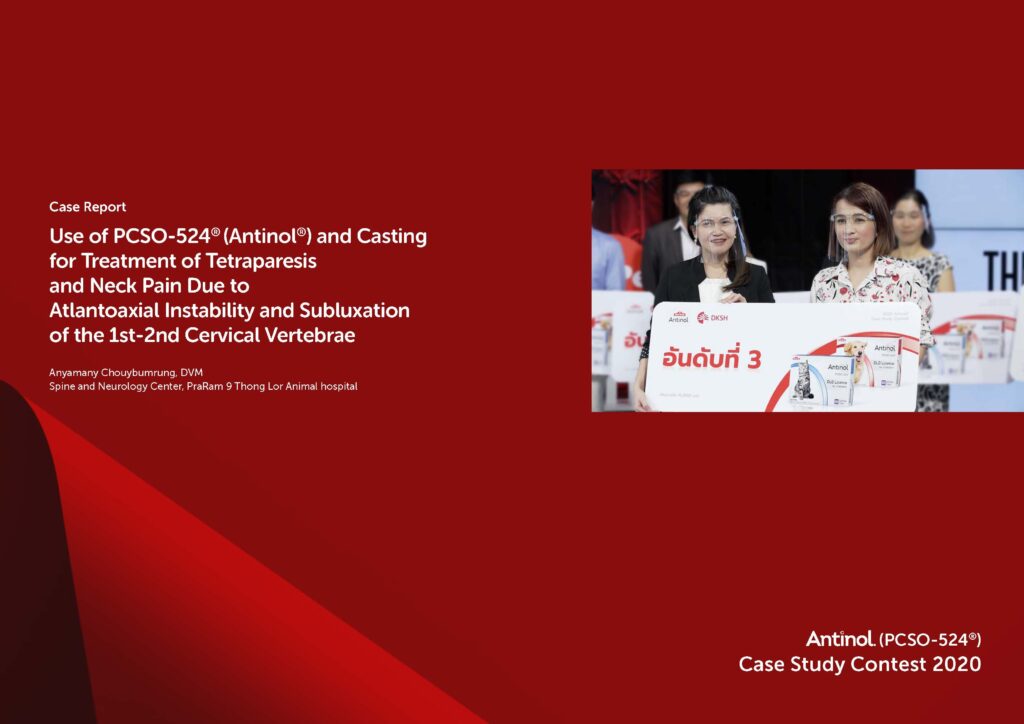
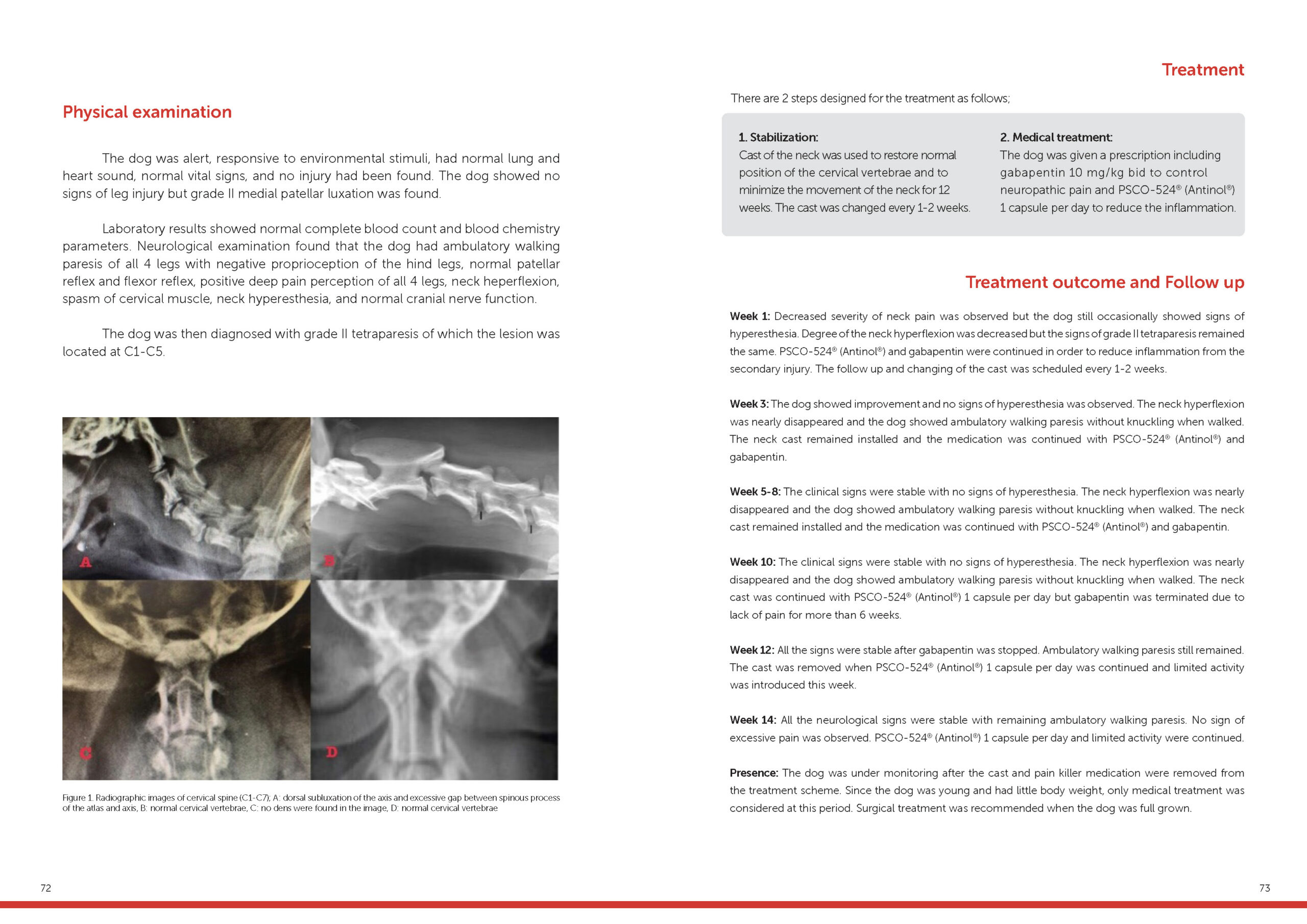
Use of PCSO-524® with Physical Rehabilitation to Regain Mobility in Dogs after Femoral Head and Neck Excision

An 8 years old Pomeranian dog showed acute non weight-bearing lameness of the right hind limb after high jumping. Preliminary examination identified pain at the right hip and radiographic images revealed right hip luxation.
Femoral head and neck excision was performed for the surgical treatment.
Multimodal treatment scheme deployed after the surgery consisted of neutraceutical PCSO-524® and physical rehabilitation using laser class 4, exercise such as Cavaletti exercise, balanced board, walking on treadmill, and hydrotherapy including walking under water and swimming.
Evaluation of the treatment during follow-up showed decreased pain score and severity of lameness, which was consistent with the owner’s report that described improvement of weight- bearing of the right hind limb and the quality of life.
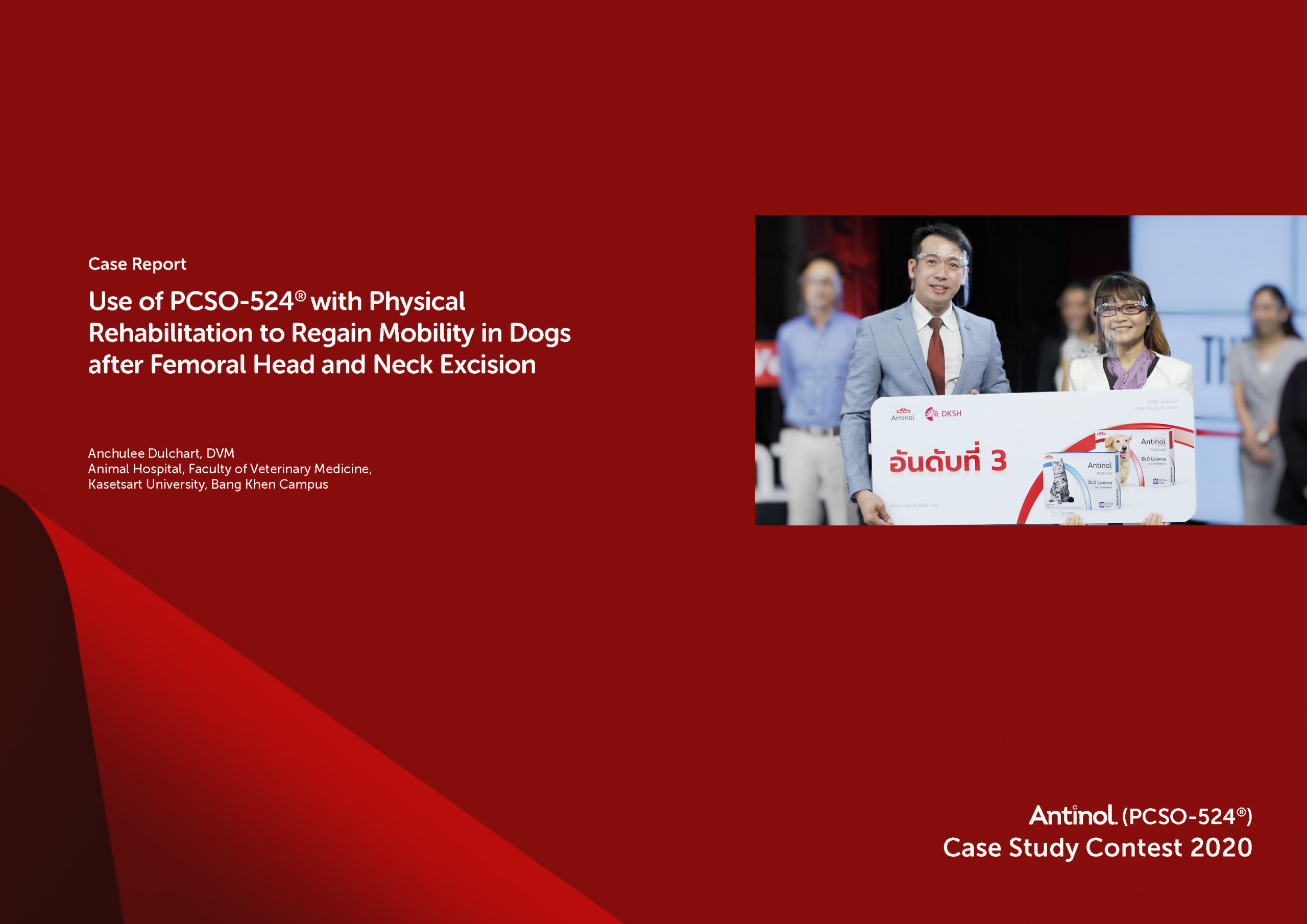
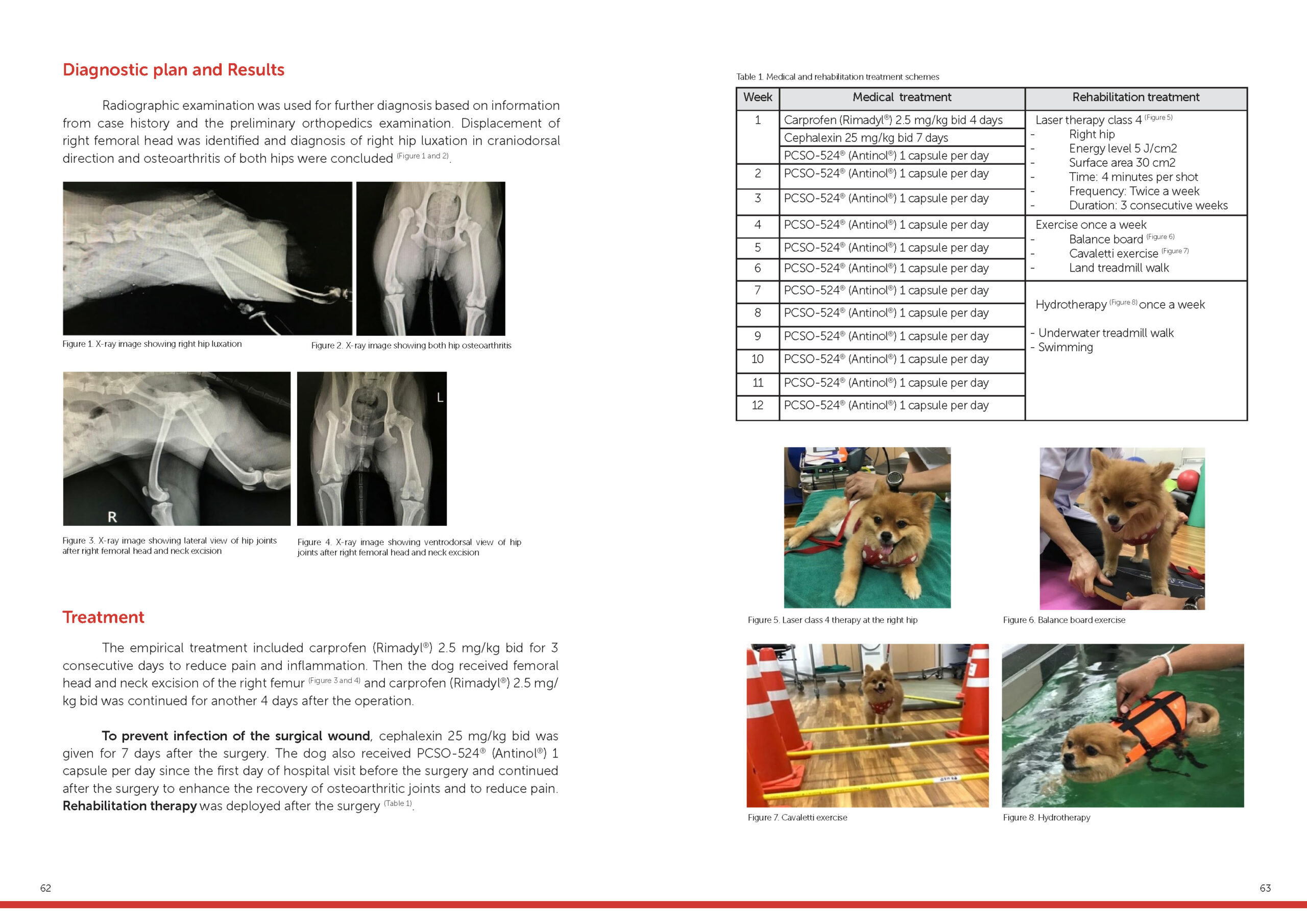
Use of PCSO-524® and Cyclosporin for Treatment of Immune-Mediated Polyarthritis in Dogs

An 8 years old Chihuahua dog was admitted to the Small Animal Hospital at Chulalongkorn University due to signs of depression, lethargy, lameness and joint effusion. Hematological examination and test of synovial fluid indicated Immune-Mediated Polyarthritis (IMPA).
Prednisolone, Gabapentin and Amoxillin-clavulanic acid were prescribed for the treatment. Abnormally increase of ALT, ALK and AST enzyme was observed 1 week later, therefore, the treatment was changed to Cyclosporin, Gabapetin, and PCSO-524®. The clinical signs continued to improve after the adjustment of prescription and Cyclosporin and Gabapetin were terminated after 3 and 4 months, respectively.
A follow-up examination at 4 months later showed no signs of lameness and joint effusion and no adverse effects caused by the long-term use of PCSO-524®.
The success of IMPA treatment is a result of rapid diagnosis and appropriate treatment protocol. Follow-up for treatment evaluation is necessary during the treatment course in order to reduce the impact on health and minimize the medication dosage without risk of causing adverse effects or recurrence of the disease.

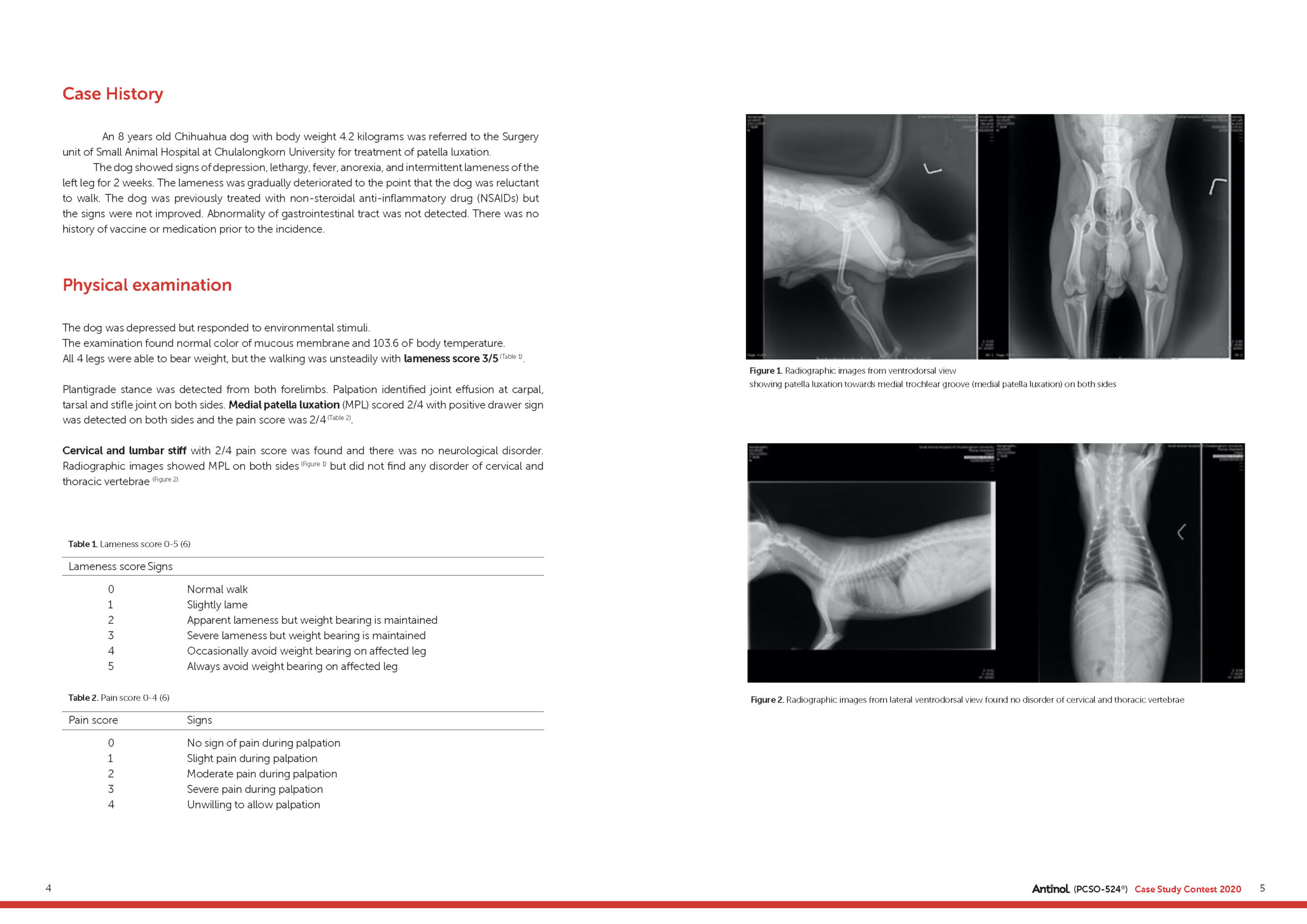
PCSO-524® for Treatment of Immune-Mediated Polyarthritis in Dogs

An 8-year old Chihuahua dog was admitted for surgical treatment of patella luxation at Small Animal Hospital of Chulalongkorn University, Thailand.
At 2 weeks prior to the hospital visit, the dog showed signs of fever, anorexia, lethargy, and lameness of the left leg. Non-steroidal anti-inflammatory drug (NSAIDs) was prescribed at that time but the dog had no response to the treatment.
The dog received prednisolone 0.6 mg/kg bid, gabapentin 10 mg/kg sid, samylin® liver supplement 1 tablet sid, and amoxicillin-clavulanic acid 20 mg/kg sid in the first week of the treatment. Then prednisolone was stopped due to elevation of liver enzymes; AST, ALT, and ALK.
The following 1-month treatment course included cyclosporine 6 mg/kg bid, gabapentin 10 mg/kg bid, samylin® 1 tablet sid, and PCSO-524® 1 capsule bid.

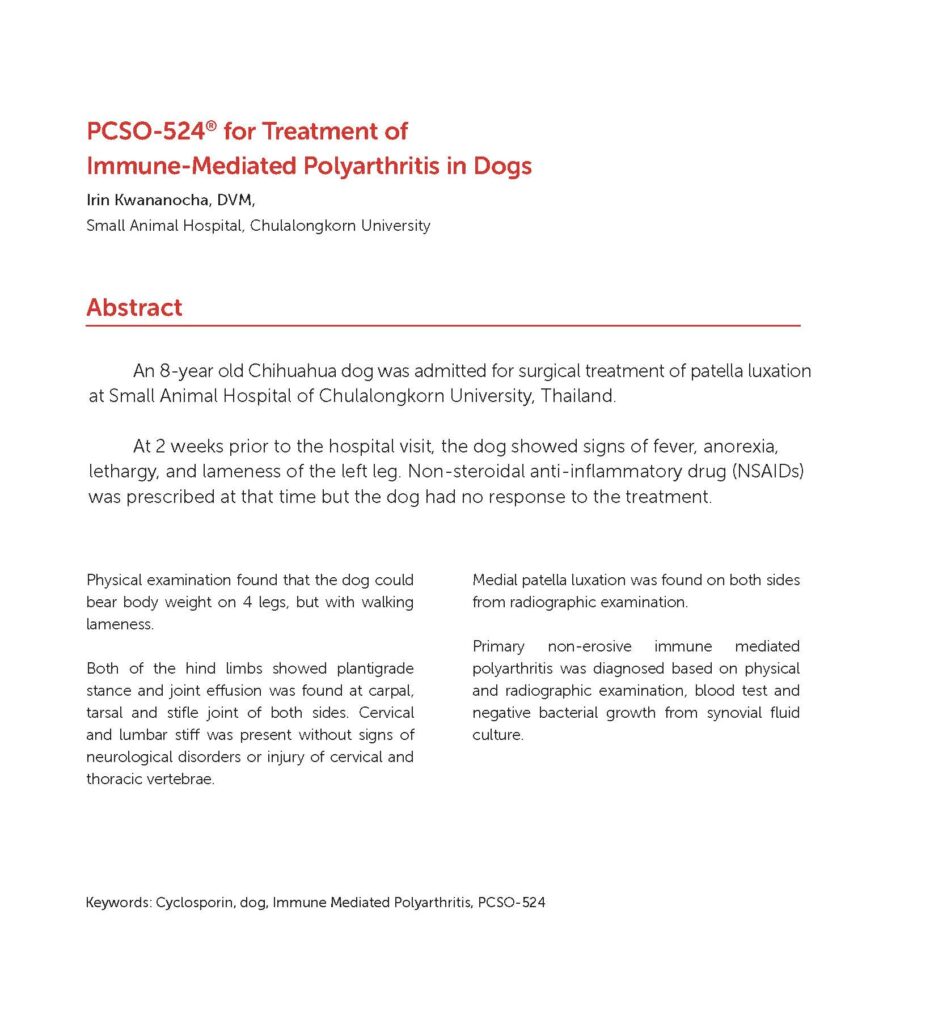

This article was summarized from the original article published in The Journal of Thai Veterinary Practitioners by the permission of Veterinary Practitioner Association of Thailand (VPAT)
Use of PCSO-524® for Control of Inflammation Caused by Iris Tumorand Uveitis in Cats with Lymphoma and Chronic Kidney Disease

A neutered male Domestic Shorthair cat aged 8 years was infected with FIV and diagnosed with nasal submucosa-T-cell lymphoma that was positive to CD3.
Four months later, tumor of iris and uveitis were found in the left eye. Treatment of inflammation of the left eye included prednisolone acetate 1% eye drop (lnf-oph® 1 %, Seng Thai company; Thailand) qid, doxycycline (Siadocin®, Siam Bheasach; Thailand) PO at the dose 10 mg/kg/day, prednisolone (Prednisolone GPO; Thailand) PO0.36 mg/kg bid.
Two weeks later, the size of tumor remained constant, the inflammation degree was reduced but creatinine level was increased. Administration of oral prednisolone, not the eye drop, was then terminated. Uveitis of the right eye was diagnosed and also fibrin in the anterior chamber and tumor of the iris were found in the right eye. Prednisolone acetate 1% eye drop was prescribed for both eyes.
The inflammation of both eyes still existed after 1 month of the prednisolone treatment. Green Lipped mussel extract, PCSO-524® (VetzPetz Antinol®, DKSH, Thailand), 1 capsule per day was then prescribed as an alternative of steroidal medication for control of inflammation, together with the prednisolone acetate 1 % eye drop in both eyes.
After 30 days of the start of PCSO-524® treatment, the tumor of iris disappeared and the severity of uveitis was reduced in both eyes.
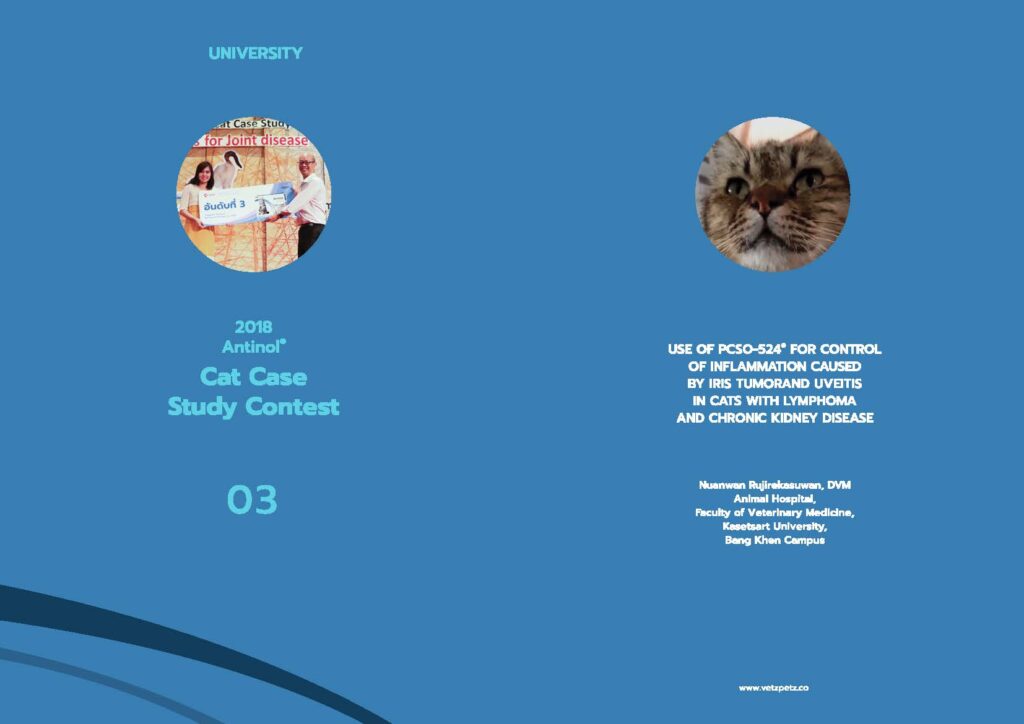

Nutraceutical Treatment of Feline Fhne and Hip Dysplasia in an 8-Month Old Cat

A Persian male cat was diagnosed with right hip luxation and left hip injury. While waiting for surgical treatment, the cat was treated with NSAIDs to control pain and inflammation.
After the operation on the right femoral head (right FHNE), the cat received antibiotics and NSAIDs for 10 and 3 consecutive days, respectively. Two weeks after the operation, the lameness and pain of the right hip, as observed from palpation, still remained, but the cat began to bear partial weight.
PCSO-524® was then prescribed and the gait analysis was performed to measure the angle of joint movement.
The monitoring showed increased angle of joint movement and decreased lameness score. This was consistent with the owner report that described less hiding behavior of the cat and improved high jump performance and better quality of life.
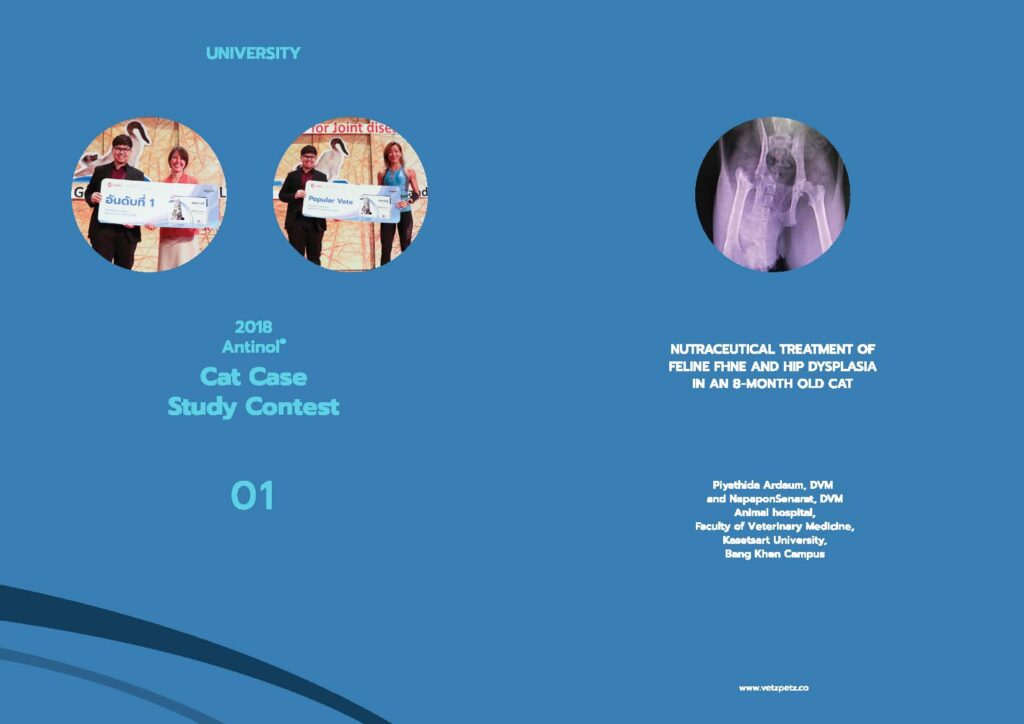
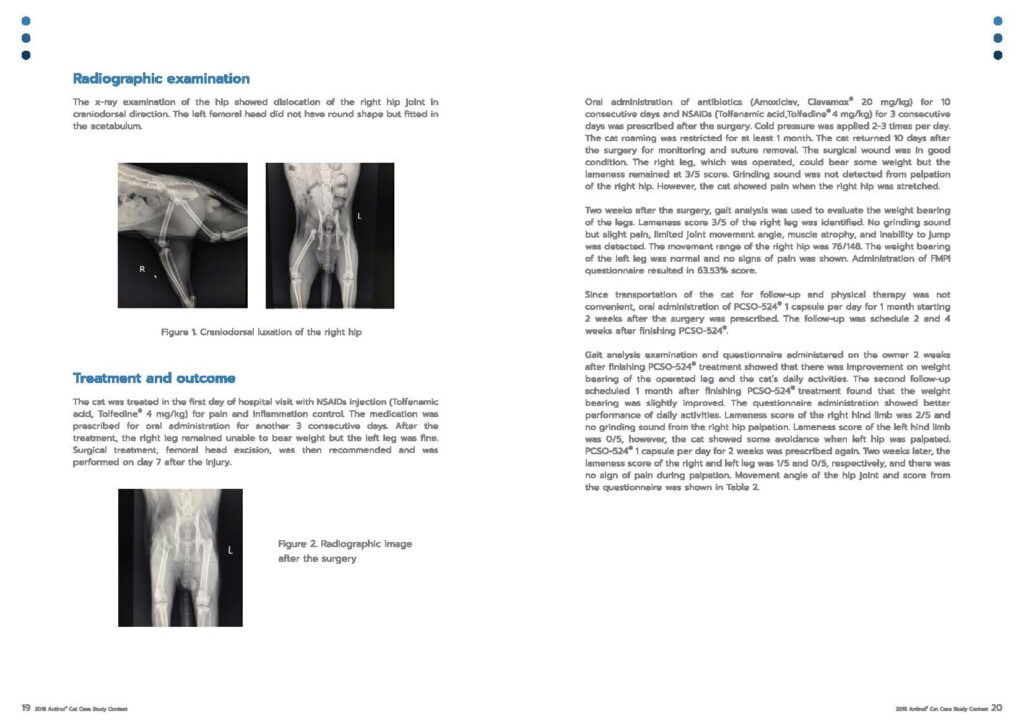
Updated Study Topics
New researches and publications related to PCSO-524® and its result in clnical test submitted by veterinarians on the global conferences every year and the data keeps growing with more studies conducted


 Authors:
Authors: